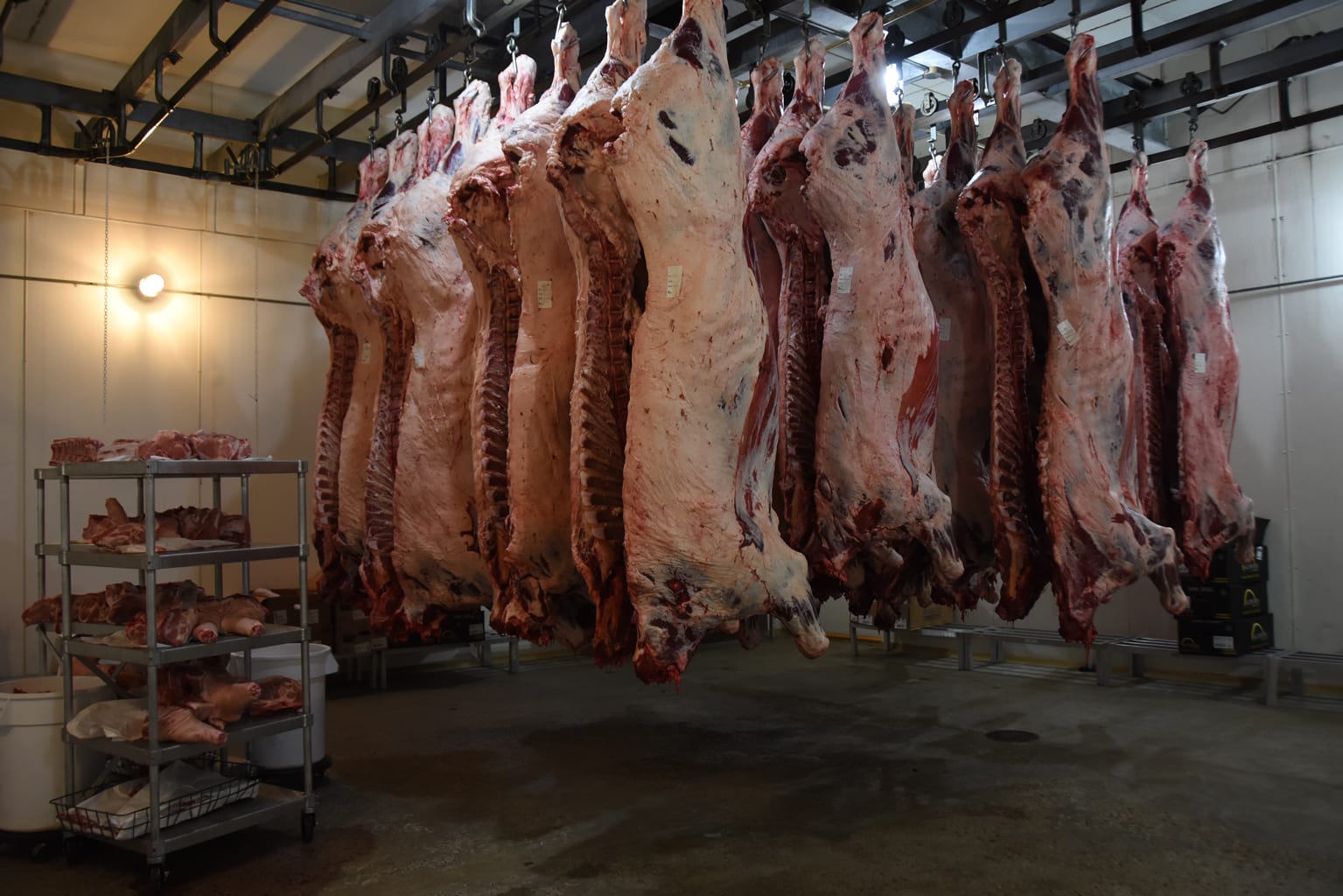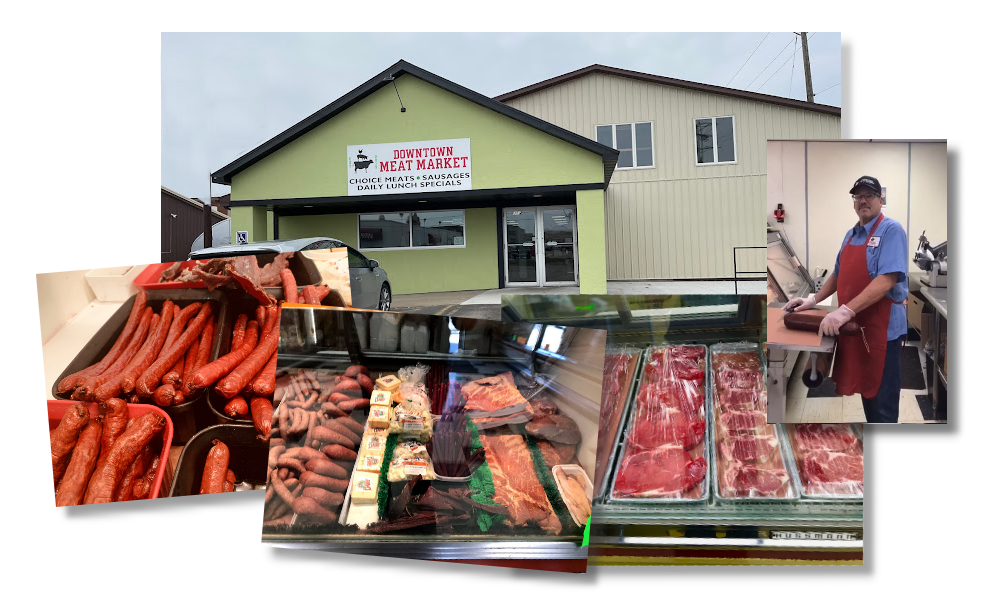Why Residents Love Bagley Farms Meat Market Edwardsville IL for Their Meat Purchasing
Why Residents Love Bagley Farms Meat Market Edwardsville IL for Their Meat Purchasing
Blog Article
Uncover the Art of the Butcher's Cut in a Modern Meat Market
In the ever-evolving landscape of modern-day meat markets, the butcher's cut has transcended its typical origins, merging old-time craftsmanship with modern practices. What genuinely sets the modern butcher apart is their ability to create a deeper connection in between customers and the origins of their meat.
Advancement of Butchery Strategies
The development of butchery strategies mirrors an abundant tapestry of development and adjustment driven by improvements in technology, adjustments in consumer demand, and a much deeper understanding of meat science. Historically, butchery was a craft gave via generations, with techniques sharpened over centuries to optimize return and taste. Nevertheless, the commercial revolution introduced mechanization, changing conventional methods and making it possible for massive processing.
The mid-20th century saw butchery techniques further fine-tuned by clinical insights into muscle biology and meat aging, improving both inflammation and preference. Innovations like vacuum cleaner product packaging and refrigeration extended product shelf-life, allowing butchers to expand offerings and improve quality assurance. This duration also marked the rise of specific tools, such as band saws and meat slicers, which enhanced accuracy and efficiency in meat processing.

Electronic systems currently help in monitoring pet provenance and optimizing cuts to fulfill details client preferences. Additionally, a rebirth in artisanal butchery has actually arised, blending typical abilities with modern knowledge to provide to customers seeking moral and lasting meat options.
Understanding Meat Cuts
Understanding the ins and outs of meat cuts is vital for both butchers and customers seeking top quality and value. For butchers, exact cuts show ability and respect for the craft, ensuring very little waste and ideal yield.

Recognizing muscular tissue composition is essential; muscle mass made use of more frequently by the animal tend to be tougher and are best matched for slow-moving food preparation methods, while less-used muscles, like those located in the loin, are much more tender and suitable for cooking or roasting. Experience with these differences empowers consumers to make informed choices, boosting their culinary ventures.
Picking Top Quality Meat
Choosing the right meat entails even more than just selecting a visually appealing piece from the display. The art of selecting quality meat requires a critical eye and understanding of certain features that represent quality and quality.
Secondly, consider the marbling, which describes the white flecks of fat within the muscle. Proper marbling is a crucial sign of tenderness and flavor, as it melts throughout food preparation, boosting the meat's juiciness. Remember, higher marbling commonly correlates with premium top quality cuts, such as USDA Prime.
Texture is one more critical aspect; meat needs to really feel strong to the touch, not slimy or overly soft. Additionally, bear in mind the fragrance. Fresh meat should have a clean, neutral odor, devoid of any type of sour or off-putting odors.
Matching Cuts With Food Preparation Methods

On the other hand, click to investigate harder cuts like brisket and chuck roast are rich in collagen, which damages down right into gelatin when prepared gradually. These cuts are ideal for braising or slow roasting, allowing the meat to tenderize gradually and create deep, intricate tastes. Cuts such as short ribs and pork shoulder make out well with slow-cooking methods, where extended cooking times change their durable appearances into succulent recipes.
Lamb shanks and oxtail, which call for prolonged cooking to soften, are best prospects for cooking or slow simmering. These approaches coax out abundant, passionate flavors while preserving moisture. By comprehending the special qualities of each cut, cooks and home chefs alike can elevate their cooking productions, making certain each recipe is both satisfying and unforgettable.
The Butcher's Role Today
Browsing the evolving landscape of the modern meat market, the butcher's role today prolongs past simple prep work of cuts. Contemporary butchers are cooking artisans, instructors, and advocates for lasting techniques. They link the gap in between the ranch and the fork by making sure moral sourcing, understanding animal husbandry, and prioritizing transparency in the click to investigate supply chain. This shift mirrors the growing customer demand for quality over amount, where provenance and animal well-being are critical.
In addition to crafting exact cuts, butchers currently engage straight with consumers, using cooking guidance and tailoring choices to suit individual needs and preferences. Their proficiency in meat aging, marbling, and taste accounts see here encourages customers to make educated decisions, boosting their culinary experiences. This individualized service exhibits the butcher's progressing duty as a relied on consultant in the kitchen area.
In addition, butchers are pivotal in reducing waste, making use of whole animals to create diverse products such as sausages and supplies. This detailed strategy not only respects the pet yet likewise straightens with contemporary sustainability goals. This way, the modern-day butcher personifies both custom and advancement, adjusting to an ever-changing market while protecting the virtuosity and honesty of their craft.
Verdict
Mastery in comprehending varied meat cuts and quality indications encourages butchers to supply informed suggestions, aligning details cuts with optimal food preparation approaches. By honoring historic techniques while welcoming contemporary demands, the butcher's function remains crucial in today's innovative meat market.
Report this page